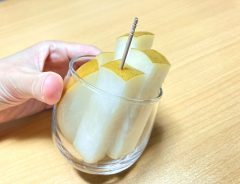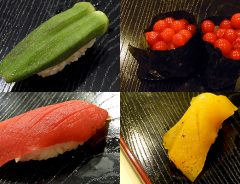- Source:
- f_aym11 / saayuoneko / nascooo13 / junko_kaho
- Tags:
- lifehack / Storage / Vegetables
Related Article
-

Origami Artist Turns Plants into the Most Amazing Moving Creatures
-

Lose weight on a budget with these Japanese diet recommendations
-

How to enjoy a Happy Meal in your car: McDonald’s Japan lifehack goes viral
-

Japanese agricultural group shares awesome way to slice, serve and share Asian pears
-

Make muggy weather more manageable with this money-saving lifehack
-

Sushi Chef Kurosawa’s Artistic Vegetarian Creations Will Surprise And Delight You



Don't you hate it when you end up with leftover vegetables?
To tackle that, a lot of people are now freezing their vegetables while they are still fresh and uncooked. Here we will show you how 8 vegetables that could be frozen and still taste pretty good when you cook them.
1. Onions
The problem with onions are that they lose their crunchiness once you freeze them. But if you are going to fry them, that's not really an issue.
It's probably better to slice them before you freeze them, since you can break the fiber up; frying them will then be a breeze.
Freezing onions has another benefit: water will escape out of the onion, making the onion really sweet.
It's best not to thaw them completely when you are using frozen onions.
2. Broccoli
Cut the broccoli in a size that is easy to eat, and place it in the fridge as is.
While it is possible to freeze broccoli that are boiled, they might end up being too soft.
Turn it in to a Chinese-style food by steaming the frozen broccoli; perfect for that extra side dish.
3. Turnips
Turnips can also be great if you freeze them raw. For this reason, it is possible to slice them. And you can use them for cooking straight away in their frozen state.
Not only turnips cook better when they are frozen, but they soaks up flavor from soup etc.
4. Carrots
Carrots' nutrients can be retained simply by freezing.
However, freezing them as they are might not allow the inside to freeze, losing their nutrients. In addition, frozen carrots are hard to cut.
For this reason, cur them or chop them before freezing them is the best way to go.
5. Chinese cabbages
Many people think Chinese cabbages are not suited for freezing, as they contain a lot of water.
But in reality, Chinese cabbages tend to become softer and more flavorsome.
Although crunchiness may be reduced, you get a soft texture.
The tip to freezing is that you break the cabbages into each "leaf": don't freeze the entire cabbage!
6. Komatsuna (Japanese Mustard Spinach)
Komatsuna's flavor can be enhanced by freezing.
Wash the komatsuna and wipe off moisture. Then, cut them into a good size. Place them into a air-sealed bag, remove air from it, and then put them inside a freezer.
Defrost the vegetables with running water while the vegetable is still inside the air-sealed bag. If you are heating/frying the vegetable, you can use it straight out of the freezer.
7. Tomatoes
Tomatoes can also be frozen as is. If you want to enjoy the tomato's freshness, then freezing is a bad idea. However, if you are going to use the tomatoes for cooking, then frozen tomatoes are pretty good.
For instance, if you freeze the tomato and then defrost, peeling its skin is so easy. You could also grate the frozen tomatoes to make some tomato sauce.
You can also create some sweets by pouring honey over the shaved tomatoes.
8. Parsley
Although dried parsley is quite convenient to use, it's hard to beat fresh parsley.
Place the parsley leaves in a freezer bag. Once dried up, you can rub the leaves (while the parsley is still inside the bag), then freeze again.
Doing this multiple times will result in really nice parsley flakes.
Doing this will let you enjoy a beautifully-green parsley every time.
There are vegetables that are not suited for freezing. However, if the vegetable in question can be frozen, you can chop them up in a easily-usable size to make for some easy cooking later.
In addition, freezing the vegetables at a temperature of -18 degrees (Celsius), you can retain a lot of vegetable's nutrients. We recommend you give some of these a shot!